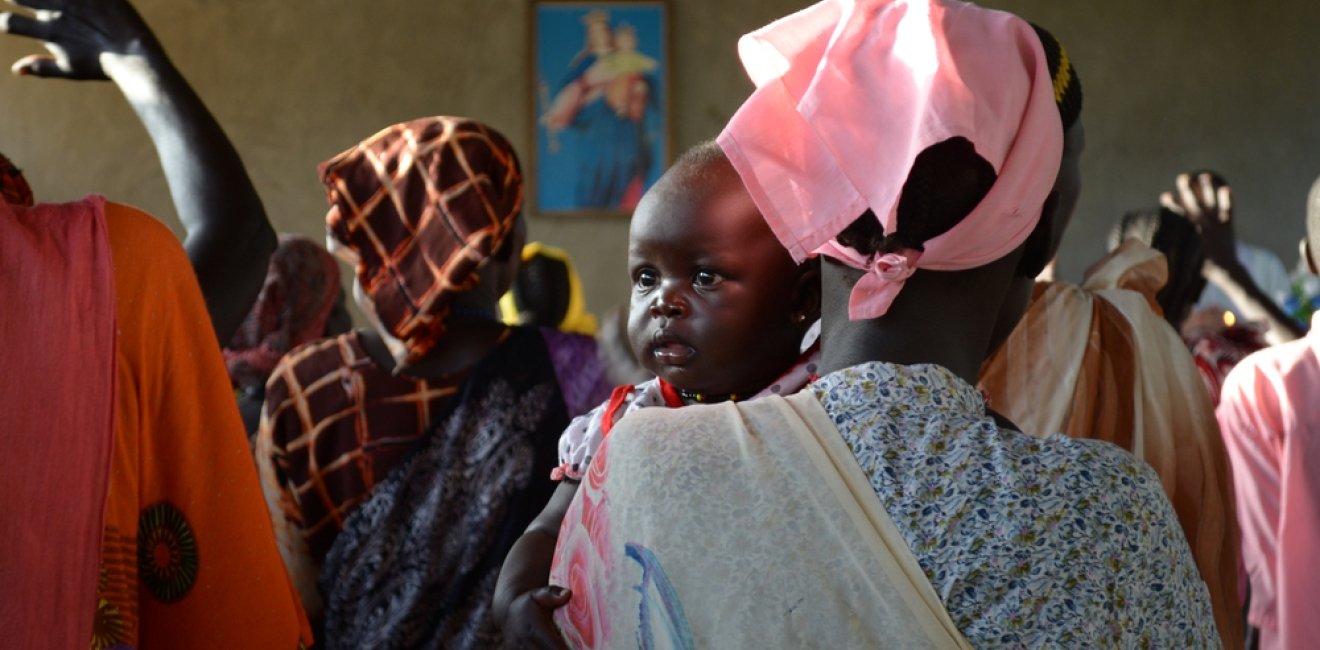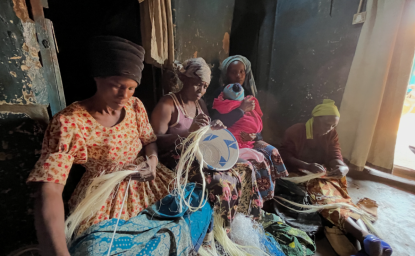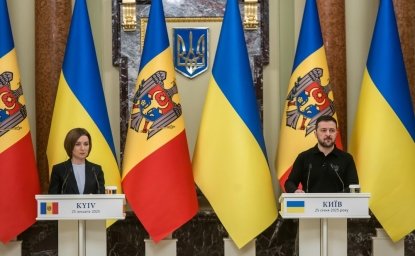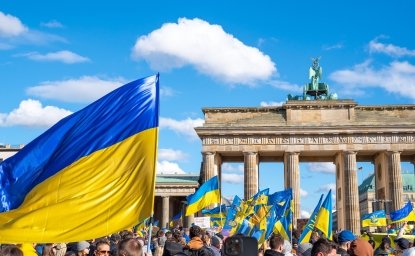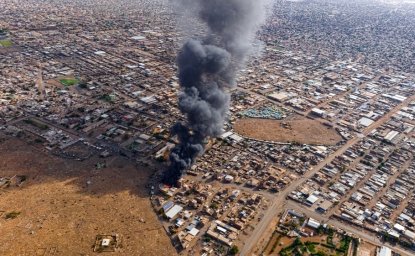Displaced people in protracted situations at times may find themselves welcoming newly displaced populations into their communities. Faith-based organizations, led by displaced people, may take on the role of responding to emergencies and distributing resources to new arrivals. This article will utilize existing literature and reports along with interviews from researchers in the field to offer a closer look at the intersections between refugee-based aid, faith-based outreach, and the persisting needs within the international humanitarian regime.
Introduction
When forcibly displaced people are portrayed in the news cycle, it is usually in a passive context—they are shown to be assisted, aided, and waiting for their next steps. The depiction of these people as victims is a one-dimensional characterization of the more than 117 million forcibly displaced people around the world. Forced displacement is not as brief as the conflict which causes it, and those impacted do not play passive roles in finding solutions to their challenges. Rather, displaced communities may take an active role in providing aid to other newly displaced or otherwise disadvantaged communities.
Due to the protracted nature of forced displacement, refugees may constitute host communities for other refugees. Such refugee-to-refugee aid can occur through communal faith groups and is underscored by different normative understandings of such outreach, which may differ from Western constructions of humanitarianism. Aid provided by displaced people to other displaced people provides new perspectives about how effectively localized humanitarian aid can manifest, and how perceptions of displaced people as inactive or burdensome are inaccurate. Recognizing these contributions to the lives of other refugees and displaced people also provides critical insight into how the localization of humanitarian aid can be more effectively implemented globally.
Refugees Serve as Hosts Through Refugee-led Initiatives
At an event hosted by the Refugee and Forced Displacement Initiative (RAFDI) in 2023, Gerasimos Tsourapas noted that the unwillingness of states in the West to accept or process displaced populations is particularly jarring when considering that “the countries that host the greatest number of forcibly displaced migrants are not those actually responsible for creating the refugee crisis to begin with.” While politics and media in Europe or North America warn of the amount of displaced people arriving to their borders, three-quarters of the world’s refugees are hosted by nations that neighbor the countries of origin, many of which are categorized as poor-, low-, or middle-income countries.
As displacement persists over generations, and neighboring nations continue to make up a majority of the world’s refugee response - often without sufficient aid from the international community - the categorization of refugee and host community becomes increasingly less of a binary. Elena Fiddian-Qasmiyeh writes in her analysis of refugee-led humanitarian initiatives that this is due to the increasingly protracted, urban, and overlapping nature of forced displacement. In places such as the Beddawi camp in Lebanon that hosts Palestinian, Iraqi, and Syrian refugees, or in the areas along the border of Uganda and South Sudan, present-day host communities that welcome new populations are often hybrid communities of the displaced and local, or composed entirely of refugees themselves.
In northern Lebanon, the decades-old Beddawi camp is composed of long-established refugee families and those who have arrived in subsequent waves from Palestine and the region at large. Many of these refugees have been displaced up to four times by the time they arrive at the camp. Original arrivals to Beddawi regularly provide support to the newly arrived refugees, through what Fiddian-Qasmiyeh defines as “refugee-refugee humanitarianism.” Though new arrivals and previous residents are often from different nationalities, they are connected through shared refugee identity and a mutual understanding of what it means to be displaced by conflict, forming a “refugee nation” on the outskirts of the city of Tripoli. Alongside humanitarian aid groups, these “original” refugee communities offer critical support and aid to newly arriving refugees.
Groups in Beddawi help newly arrived refugees obtain material resources, establish themselves, and receive communal and spiritual support. For instance, while observing the religious month of Ramadan, established Beddawi residents collected donations from the community to provide iftar food provisions for in-need families who had recently arrived from Syria. However, while such outreach does fill some humanitarian gaps, it is far from ideal – resources are limited, space is cramped, and there is an inequality of treatment and access to resources for newcomers. Hostility and challenges in aid distribution increase as space and resources dwindle. While these initiatives represent the crucial role displaced people play in providing for their communities, refugee-led humanitarianism cannot replace the need for international cooperation in responding to forced displacement or be relied upon as a permanent solution to the issues which accompany resettlement. Examining such occurrences, however, provides a more accurate picture of how the global response to forced displacement is relegated: while Western media can focus on the strain placed on countries in North America or Europe from receiving refugees, a majority of them are arriving to neighboring countries which may host hybrid host-refugee communities that take initiative in responding to local needs.
Faith-based Actors and their Role in Refugee Communities
Whether it is refugees in Beddawi providing food during the holy month of Ramadan, Afghan refugees in Greece collecting money to provide a child in the community with a Muslim burial, or the “refugee pastors” who in turn serve other communities of refugees from the Democratic Republic of Congo, refugee-initiated humanitarianism often manifests through religious communities and faith-based practices. Displacement and religiosity regularly intersect - faith practice and community play an essential role in providing a sense of collective identity, solidarity, and a sense of stability, as well as offering a framework through which material provisions can be distributed. For those within a diaspora, religion serves as a tool for community, home, and place-making, utilizing a transnational connection to “retain control over and actively negotiate their identity.”
Faith and religious practices have been linked to personal and communal mental fortitude, particularly in the context of the multifaceted and often overlapping traumatic events which many displaced people experience. During the instability of displacement and the resettlement process that follows, faith is a psychosocial resource for refugees, serving as a proactive protective factor against further trauma. A key factor of religion’s intersection with refugee well-being is its role in promoting mental resilience. A study of refugee women from Central and West Africa found that in the post-migration phase, resilience is a consistent predictor of well-being and autonomy. This is measured in the context of personal, social, and cultural resources, which emphasizes the role of faith in coping with and processing traumatic events. Psychological studies have found that personal belief or faith significantly predicted coping capability and was a consistent protective factor against trauma for displaced individuals. Faith communities also provide a medium for creating familial and communal structures during displacement. The spiritual support which displaced communities provide to other refugees is invaluable – collective faith practices such as prayer or ritual burial practices offer a sense of dignity, normalcy, and closure which is essential to processing traumatic events which regularly accompany displacement.
Ties to religious networks, as well as the ability to practice agency within them, allows displaced people to establish a sense of place, creating stability and underscoring potential outreaches to other refugees. The influence of faith and religious groups on refugee resettlement at an institutional level is extensive and well documented. On the international stage, faith actors were included as stakeholders in the UNHCR 2018 Global Compact on Refugees and Global Compact for Safe, Orderly, and Regular Migration. There is an extensive global history of interreligious collaboration, sanctuary traditions, and material and immaterial support in the context of faith-based refugee relief and resettlement. As the international humanitarian regime attempts to further incorporate faith and displaced communities in a mission to localize the distribution of humanitarian aid, there remain significant challenges to a synchronized relationship between such actors and larger international donors.
In Uganda, refugee-refugee hosting often occurs in the context of faith practices, as described by Karen Lauterbach’s 2014 study, “A Refugee Pastor in a Refugee Church.” Throughout her study across Kampala, she noted several instances of refugees quickly transitioning into faith leaders and pastors for communities of other refugees arriving from the Democratic Republic of Congo. Not only is hospitality understood as part of spiritual praxis, but this informal hosting replaces formal policies not provided by the state or host community. Oftentimes, new arrivals depend on these refugee churches not only for community and spiritual resources, but for material resources which may be absent due to bias or hostility from host communities. Some faith leaders within the 50-150 Congolese Christian churches in Kampala reported being approached by international humanitarian organizations for partnership opportunities, but often view these relationships as providing unfulfilled promises, and prefer to work independently.
Localization, Humanitarianism, and the International Refugee Regime
Understanding this disconnect between local faith communities and international organizations is essential if the international humanitarian regime seeks to effectively pursue its goals of localization. Since the creation of the Grand Bargain at the World Humanitarian Summit in 2016, international humanitarian organizations have sought to localize their operations, utilizing national and community level partnerships to effectively distribute aid. The “localization agenda” seeks to utilize contracted relationships with local partners to efficiently and pragmatically provide aid and resources for long-term development. However, structural roadblocks and inconsistencies in theory and practice have prevented this from being consistently implemented.
Estella Carpi, an anthropologist and Assistant Professor of Humanitarian Studies at University College London, has extensively researched the roles of faith communities in humanitarian assistance. She has analyzed the role of faith communities in northern Lebanon providing aid, occasionally in conjunction with international organizations. Carpi noted that there is often a discrepancy between the understandings of humanitarianism from Western international non-governmental organizations (INGOs) and local faith actors. Carpi noted that charitable or community-based initiatives are understood as an aspect of necessary civic activity rather than separate humanitarian actions, as “local and refugee faith leaders and communities approach humanitarian efforts as an essential part of their own spiritual life.” Charitable practices such as zakat are understood as “just what [mosques] do,” a regular communal response, which can complicate secular and neutral INGO involvement in such efforts. Religion does not operate separately from what INGOs would characterize as humanitarian action, leading to the intrinsic role of faith leaders in refugee-refugee humanitarianism. Faith leaders’ role in communities can also lead to other political or social commitments, which in turn influences their religious roles, a cycle which Carpi surmised with the common regional saying that “good politics cannot come but from faith.” In the realm of refugee integration, religious principles of welcoming the stranger and aiding one’s neighbor are particularly impactful.
Due to their roles in communities, faith-based actors have long been at the forefront of humanitarian efforts in immediate disaster response and integrative efforts. Faith actors are particularly effective in providing aid to refugees due to their deep relationships with communities, sense of solidarity, and unique ability to provide psycho-social and spiritual support. Carpi referenced an instance in which the Danish Refugee Council utilized informal relationships with religious groups to provide aid to displaced groups in North Lebanon. Greek Orthodox and Sunni Muslim faith leaders partnered with the INGO to provide meals to local displaced communities and allocate shelter during dangerous weather conditions. The location of faith leaders within the spiritual and communal lives of displaced people makes them an ideal candidate to support through the localization agenda in the interest of more autonomous and effective humanitarian aid. However, relationships between INGOs and local faith actors are complex.
Structural and bureaucratic barriers prevent successful relationships with faith and other local actors, as the requirements to qualify as a subcontractor are extensive, requiring money and manpower. INGOs are also expected to abide by strict standards of neutrality, which faith actors cannot always adhere to due to their beliefs or religious leanings. INGOs often work informally with local faith actors, Carpi noted, doing little to publicize these relationships. Not all faith actors are treated equal, either – INGOs oftentimes “invisibilize” their connections to Muslim groups as opposed to other religious groups, Carpi stated, a result of Islamophobia and mistrust in regional actors. Faith actors in turn can also desire to reduce the visibility of their partnerships with INGOs due to similar feelings of mistrust. Such structural and ideological barriers can prevent successful relationships between INGOs and faith actors. However, understanding these barriers and creating solutions to them is critical if the international humanitarian regime seeks to continue to localize aid.
Faith actors and refugee communities are crucial players in providing effective social and material support to displaced people. As poorer countries continue to receive most of the world’s refugees in the prolonged absence of adequate support from wealthier countries, these local groups continue to fill in the gaps for communities experiencing displacement. Refugees and faith-based groups maintain a unique ability to provide solidarity, accompaniment, and support to the displaced people. However, there is still a glaring lack of humanitarian support for these local actors, who run without the necessary resources while often being displaced themselves. While calling for more responsibility sharing at the global level, understanding how the localization agenda can be altered to better incorporate and support faith-based and refugee-led initiatives in providing aid to others is a crucial dimension of creating effective humanitarian systems and supporting long term sustainable development. Recognizing the reality of the makeup of those accepting and providing for refugees – one that includes disadvantaged and displaced people themselves – offers a paradigm shift in understanding the active roles refugees take on internationally, and better informs how international organizations can sustainably provide aid and opportunities.
Author
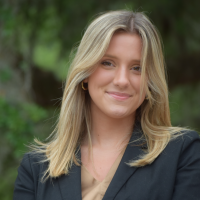

Refugee and Forced Displacement Initiative
The Refugee and Forced Displacement Initiative (RAFDI) provides evidence-based analyses that translate research findings into practice and policy impact. Established in 2022 as a response to an ever-increasing number of people forcibly displaced from their homes by protracted conflicts and persecution, RAFDI aims to expand the space for new perspectives, constructive dialogue and sustainable solutions to inform policies that will improve the future for the displaced people. Read more

